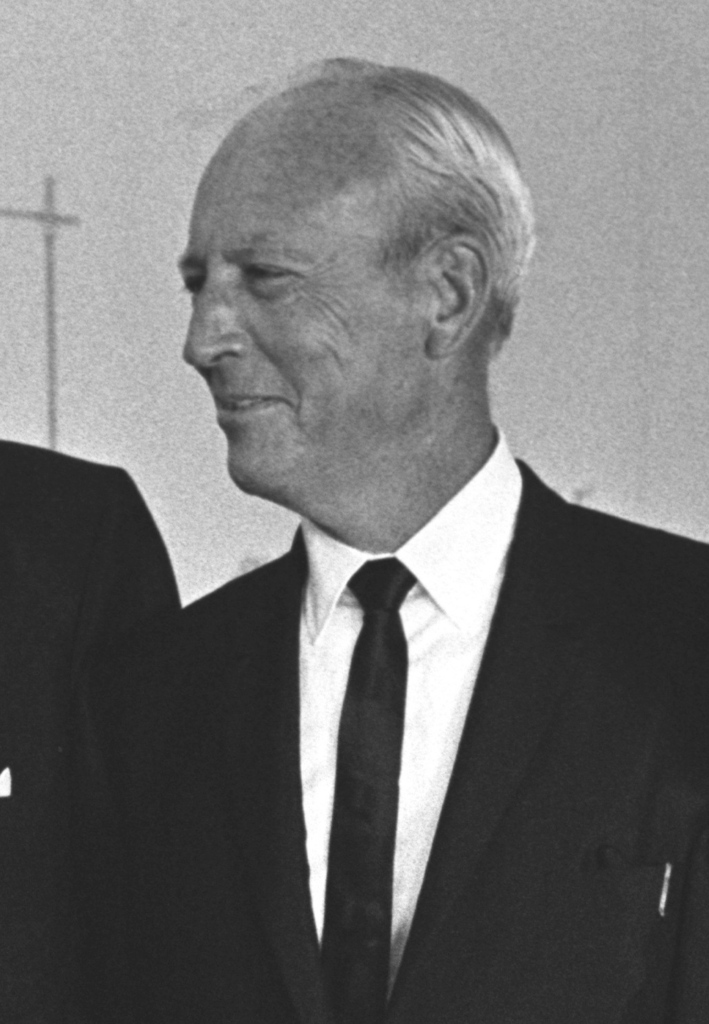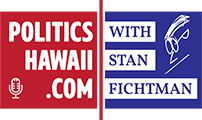As with many in Hawai‘i over the past month, the 13th convening of the Festival of Pacific Arts & Culture, in Hawai‘i for the first time, brought a great deal of excitement to Honolulu in and above the normal rigamarole of everyday life after graduation season.
From the news reports, the Festival turned out to be very popular, with many more in attendance than first imagined. Estimates right now say that about 500,000 attendees for its 11-day duration.
Even for people, like this blogger, who go to many cultural events and think of the attendance as “meh”, the fact that a half-million came out to this one, in Hawai‘i, was impressive.

PC: LBJ :: Online Photo Archive Search, Public domain, via Wikimedia Commons
With the event being so far and wide, it turned out that one of these humble writers’ co-workers was working the event, taking time to be there. In that discussion about their attendance, a historical marker came up that I don’t think they knew.
That was the vision that the second state Governor of Hawai‘i, John Burns had about what Hawai‘i could be as it became the 50th state. The person sounded interested but probably knew nothing about this part of Hawai‘i’s history, and how 49 years after Burns’s death, his vision came alive with FestPac.
WHEN JOHN BURNS WAS elected governor in 1962, Hawai‘i was within a handful of years of becoming a state, in 1959. As he evolved as a leader in the state, winning elections again in 1966 and 1970, he began and then promoted a vision of the future of Hawai‘i.
A big part of that vision came from the idea that Hawai‘i, now emerging onto the world stage as part of the United States, could become a true “crossroads of the Pacific” in which the exchange of ideas from Asia, and the United States/west, could come together in friendly exchange, elevating the state and its importance in the world.
It was a lofty goal and required a vision that looked beyond bringing people to Hawai‘i for events. It first started with building up an infrastructure that could handle the capacity of more people coming to Hawai‘i. That build-out included roads and airports.
The other part was marketing the islands as a premier destination. While some will criticize Burns for marketing the islands more for tourists, he did try to expand this out by establishing more durable economic exchanges with Pacific Rim countries
Unfortunately, at the end of his term, due to illness, as he passed away in office, Burns had created the baseline for Hawai‘i’s ability to be a destination for people and cultural exchanges like FestPac.
It only took another 49 years to see that vision happen.

PC: FestPac Facebook page
THE REASON WHY FestPAC finally brought Burns’s vision to life is that it held all the hallmarks of what he wanted to see as an event highlighting Hawai‘i’s role as a crossroads of the Pacific.
One of those hallmarks was accessibility. The fact that a reported 500,000 people attended should assume that a vast majority of that attendance was done by local folks. Unlike other major events in Hawaii, such as the Asia Development Bank (ADB) meeting in 2001 and the Asia-Pacific Economic Cooperation Economic Leaders’ Meeting in 2011, regular people could celebrate alongside the attendees.
Both of those cited events were indeed high profile but also had high barriers for most people to attend. This blogger recalls how the authorities limited the ability of people to protest at the Asian Development Bank meeting, literally putting up barriers and herding them into a small corridor as a planned protest march.
For APEC, it more felt like it was an event that Hawai‘i didn’t want to do, but because President Obama was from Hawai‘i and it was the United State’s turn to host, Hawai‘i got the gig. But as with the ADB, the ability for anyone resident to “just go and check it out” was not possible.
While Hawai‘i does host great cultural events like Night in Chinatown, the Okinawan Festival, the Honolulu Festival, and even the Memorial Day lantern floating at Ala Moana Beach Park, that the public can attend, their overall imprint on Hawai‘i is already baked in, meaning that everyone knows what will happen, what food will be there and what the event is for.
FestPac, instead, was something new, and exciting which piqued the curiosity of the state, along with it feeling that it was bigger than just a cultural festival. Leaders came (like the King of Aotearoa, Te Arikinui Tūheitia Pākī) of which people could go see and be amongst.
And that in itself creates memories, good memories, of which people in Hawai‘i might want to see more of, in the future.
WHILE IT MIGHT NOT BE FESTPAC, as the event happens only once every four years and as mentioned, a location may get to host it once in a lifetime, that should not mean that Hawai‘i couldn’t see more of this type of event happening in the state.

PC: “Hawaii2015-189” by ajay_suresh is licensed under CC BY 2.0.
For instance, there are Pacific-regional events that, if Hawai‘i could figure out how to build a stadium, could host a Pacific regional sports event like the Pacific Games.
And maybe it does not need to be that big of an event. Maybe what Hawai‘i could do is what Taiwan regularly does and host specific non-governmental events and promote them as resident-attend friendly. This blogger remembers being in Taipei, the capital of Taiwan, and seeing the promotion of the “Universiade”, which is now called the World University Games.
And who knows, maybe if Hawai‘i is tapped to do APEC again, or another international governance event like APEC, maybe the state can inform the entity that it would like to have the ability to have more touch with the people of Hawai‘i while here.
After all, one thing that Burns wanted to have in his vision was for those events to be relevant.
